If you believe it's time to offer more to current residents and prospects through your exercise program, but you're not quite sure what that "more" entails or how to get there, outsourcing might make a lot of sense for your community.
Outsourcing isn't just for therapy
The primary benefit to looking at a partner for management of any area of your community is the value of the depth and breadth of the firm's experience. Communities don't think twice about outsourcing therapy but when it comes to taking a closer look at the reasons to outsource management of the fitness center and related programming, I sometimes get blank stares from leadership. And I can't explain it. Certainly, how we provide service, the nature of our contracts with our clients, and the credentials of the staff we provide for community fitness is different from therapy groups, but the overall concept is the same. If you want an expert-run fitness program, you have to work with the experts.
I’ve had the opportunity to work with NIFS for many years with multiple communities and I can say without exception that they have taken the wellness program in our communities to a new level. They are the best in the industry at what they do, and I would not hesitate bringing them in to any senior housing community that I am affiliated with. Our communities are stronger with NIFS on their team. ~Mick Feauto, COO, LifeSpire of Virginia
NIFS Math
NIFS staff in your community are backed by an our organization that is uniquely focused on the specific work of elevating your fitness program. We're regularly supporting continuing education for our team and we have a proven model for effectively sharing resources so our clients get far more than the one NIFS manager on the ground. We like to call it "NIFS math" where 1 + 1 = 3.
What to expect from your fitness program
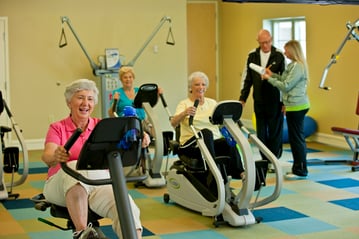 You need your fitness center to be a hallmark, a standout for the community. For your current residents, it should be one of the most praised offerings both because the staff are well-loved and because they are effective at keeping residents engaged with new, consistent, well-done offerings. The fitness program should also be on the list of reasons prospective residents choose your community. But if the group fitness calendar and the personal training services look the same as all the competition, and if you don't have the necessary data to tell key stories about how resident's lives have been improved by participating, then you're missing out on an opportunity.
You need your fitness center to be a hallmark, a standout for the community. For your current residents, it should be one of the most praised offerings both because the staff are well-loved and because they are effective at keeping residents engaged with new, consistent, well-done offerings. The fitness program should also be on the list of reasons prospective residents choose your community. But if the group fitness calendar and the personal training services look the same as all the competition, and if you don't have the necessary data to tell key stories about how resident's lives have been improved by participating, then you're missing out on an opportunity.
NIFS clients see a lot of value in their partnerships because they gain much more than "just a trainer" for their gym. Check out some of the services we provide that aren't common to most community fitness programs:
- Balance Redefined includes rich programming and services focused specifically on balance training and fall prevention; our Balance Redefined offerings were built from, and regularly evolve because of our experience with dozens of communities over the last 15 years.
- Key data points for the fitness program are regularly reported and smartly used to continuously improve what we're offering in each client setting. From tracking participation per resident to evaluating outcomes and goals on our programs, we are constantly checking in on and reporting our progress.
- Reaching residents in assisted living and memory care environments with quality fitness services can be a real challenge. Our staff provide that outreach through strong relationships with community lifestyle coordinators. Modified balance assessments, group classes, personal training, and hybrid health-related programming are all tailored for the unique needs of residents in those settings.
[Related Content: 4 Keys to Getting Data You Can Actually Use]
Find out how you can put NIFS math to work in your community. Contact us or stop by and see us at the LeadingAge Expo. We'll be hanging out with our calculators doing NIFS math in booth #1261.

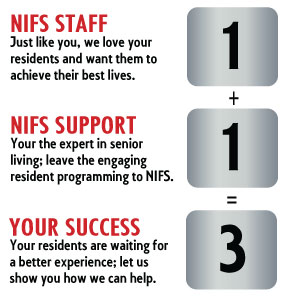
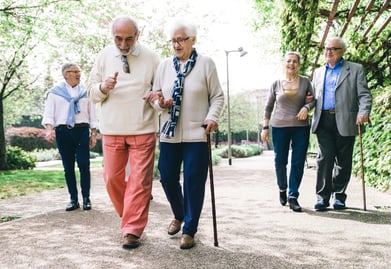

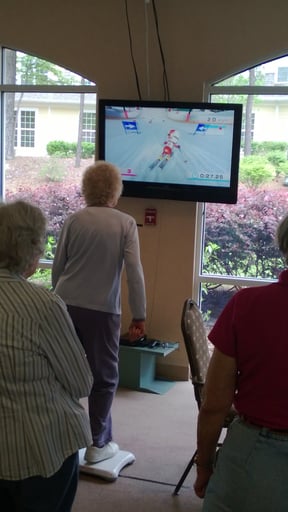 Twenty years ago, if someone had suggested purchasing video games for a retirement community, they would have been laughed at. “Those are for kids,” would have been the response. “No one over 60 is ever going to be interested in that.” I’m here to tell you times have changed! Now, everywhere you look people of all ages are getting in on the action and testing their skills in the virtual world.
Twenty years ago, if someone had suggested purchasing video games for a retirement community, they would have been laughed at. “Those are for kids,” would have been the response. “No one over 60 is ever going to be interested in that.” I’m here to tell you times have changed! Now, everywhere you look people of all ages are getting in on the action and testing their skills in the virtual world.
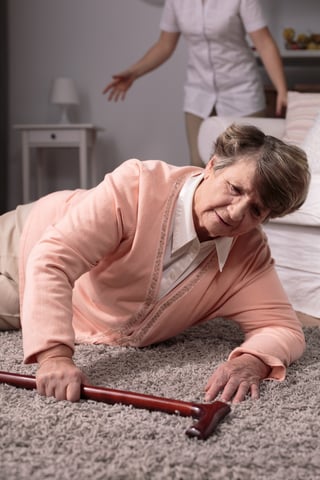 The numbers are clear:
The numbers are clear: 



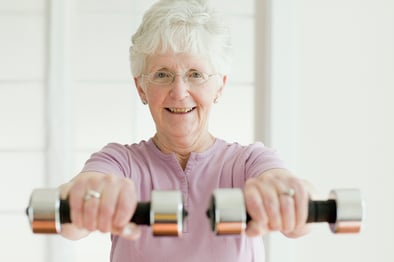 With exercise showing benefits such as improved balance, increased total-body strength, improved cognition, and reduction of chronic illness, it is difficult to understand why people would not exercise. However, there are two reasons why I think this “too much, too soon” judgment could arise in senior fitness:
With exercise showing benefits such as improved balance, increased total-body strength, improved cognition, and reduction of chronic illness, it is difficult to understand why people would not exercise. However, there are two reasons why I think this “too much, too soon” judgment could arise in senior fitness: 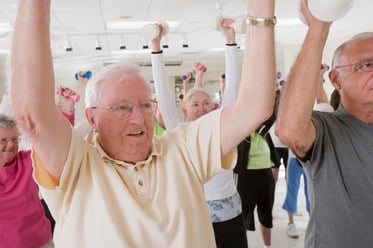 Activities Directors in assisted living and memory care environments are busy. They have a lot of balls in the air, not the least of which is some type of movement-based programming for their residents. Unfortunately, that specific element of their enrichment programming often takes a back seat to other priorities.
Activities Directors in assisted living and memory care environments are busy. They have a lot of balls in the air, not the least of which is some type of movement-based programming for their residents. Unfortunately, that specific element of their enrichment programming often takes a back seat to other priorities.
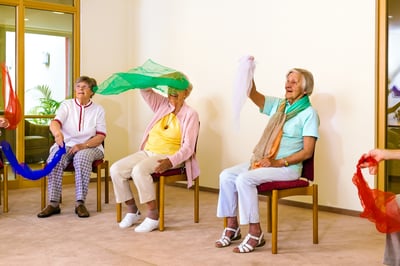 While we've seen significant progress in what exercise can look like for residents in independent living (IL), for many communities, there remains something of a disconnect in making sure residents throughout the continuum of care have access to the same or similarly robust services and amenities.
While we've seen significant progress in what exercise can look like for residents in independent living (IL), for many communities, there remains something of a disconnect in making sure residents throughout the continuum of care have access to the same or similarly robust services and amenities. 
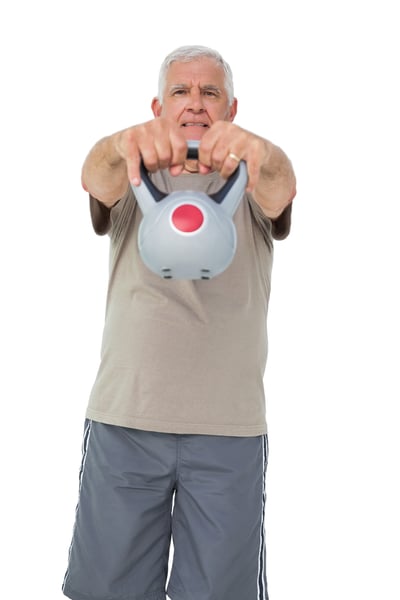

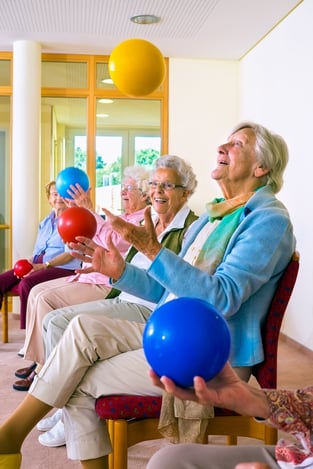 Group exercise classes are one of the top activities in senior living communities nowadays. With the increasing number of activities provided on community calendars, having a good group exercise program
Group exercise classes are one of the top activities in senior living communities nowadays. With the increasing number of activities provided on community calendars, having a good group exercise program 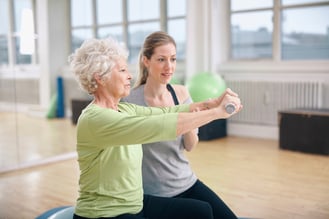 and activities for residents, I’m often surprised at what an afterthought their exercise amenities and services are. The clear appetite to provide residents with the very best options for living just doesn’t square with what’s in place for resident exercise at the community.
and activities for residents, I’m often surprised at what an afterthought their exercise amenities and services are. The clear appetite to provide residents with the very best options for living just doesn’t square with what’s in place for resident exercise at the community.